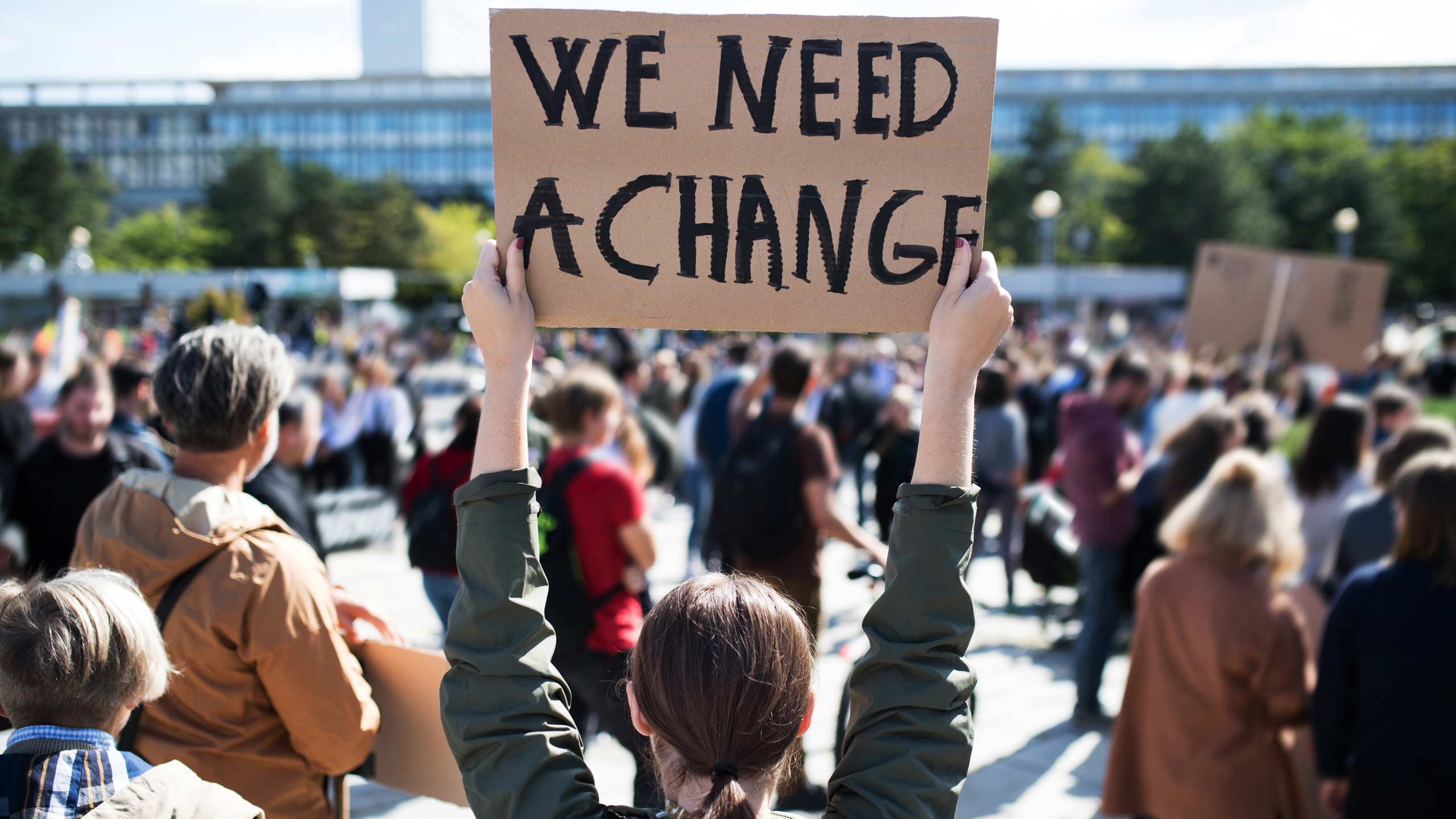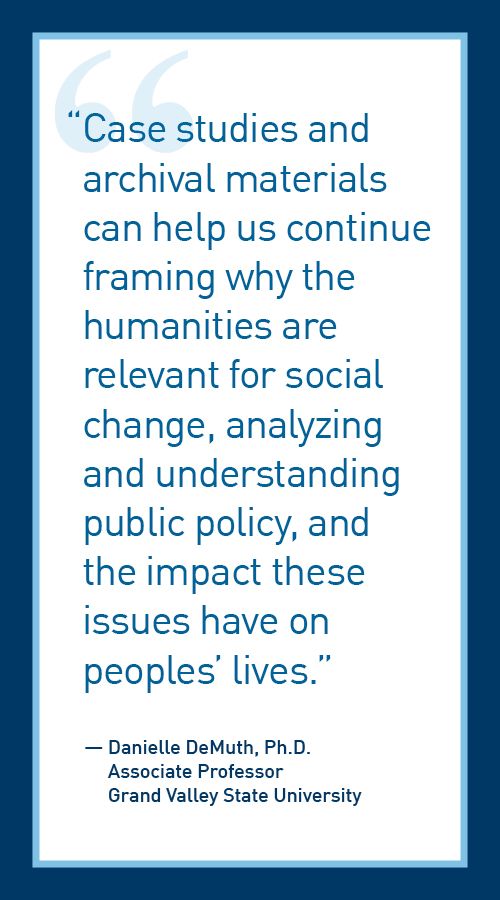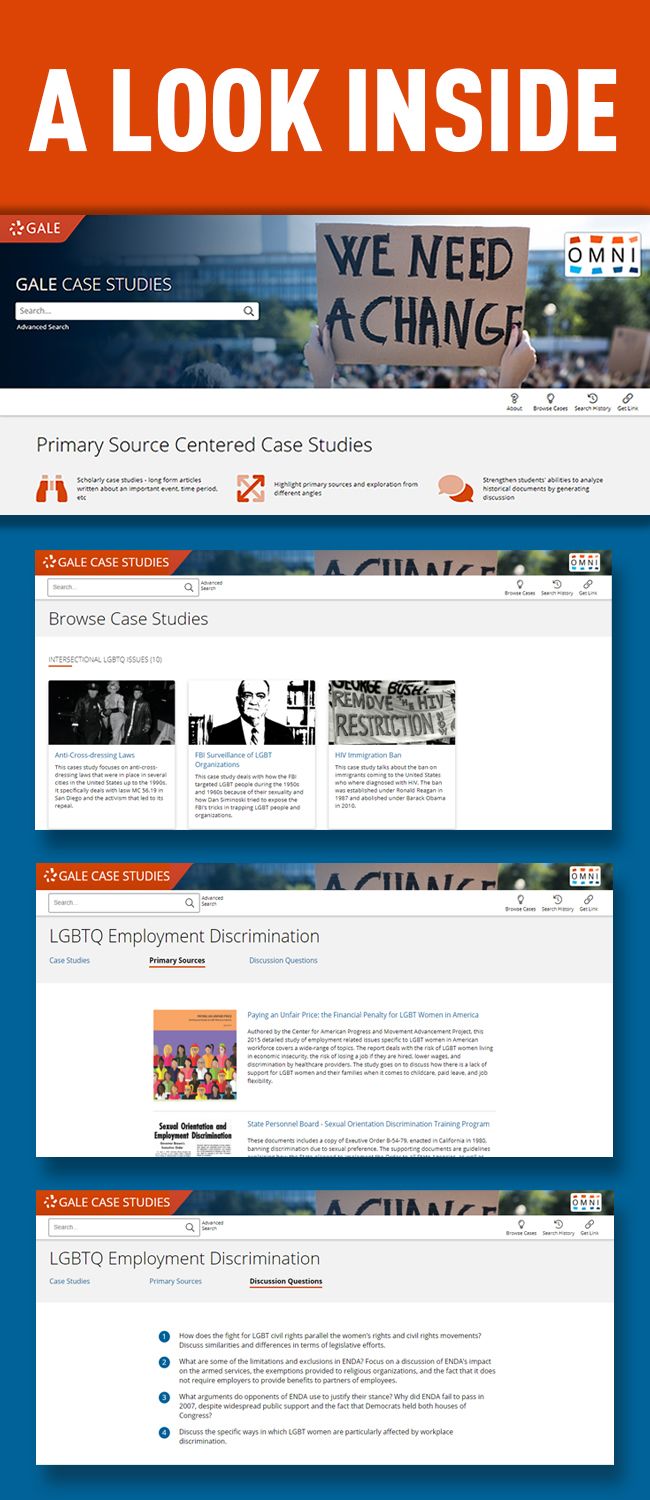Case Studies: Going Back and Looking Forward
There’s no doubt the job of teaching is a big and important one. With case studies, instructors can explain ongoing social issues using historical snapshots that present a complete picture of the past and a guide for the present.

For instructors, breaking down barriers to student engagement and research is an ongoing pursuit—most notably, in the humanities.
Danielle DeMuth, associate professor of Women, Gender, and Sexuality Studies at Grand Valley State University in Allendale, Michigan, believes that case studies are an essential teaching tool and an easy entry point for students outside the humanities. “Those of us who are in the humanities know that the humanities are always under attack. ‘Are they relevant? They’re not practical. They’re not applicable.’ But as scholars, we know they are. We’ve been studying them and devoted our lives to them,” said DeMuth.
As a professor whose courses are focused on feminism and LGBTQ studies, DeMuth has found case studies to be helpful in proving just how relevant and applicable the humanities are, particularly for our future leaders and health care professionals. From nursing and psychology to pre-law and economics, students can glean valuable insights from case studies that will affect not only their coursework but how they approach their careers. “When we think about social issues, there are threads that tie many groups to the same issues,” explained DeMuth. “Case studies and archival materials can help us continue framing why the humanities are relevant for social change, analyzing and understanding public policy, and the impact these issues have on peoples’ lives.”
For the academic community, the digitization of historical content has been monumental—well before online and blended learning became the norm across college campuses. Now that more students are learning and researching from home, digital archives like Gale’s Archives of Sexuality and Gender make information more available and accessible to students.
With the digitization of these archives comes an extraordinary opportunity to study primary sources, but it also presents a barrier to students. “Students can’t just be thrown into an archive and be expected to dig around and understand what they’re seeing and understand how to make sense of it. It’s overwhelming to students and it’s overwhelming to instructors, because the task of each one of us choosing documents from 1.5 million [in the Archives of Sexuality and Gender] is tremendous,” DeMuth said.
In DeMuth’s classroom, case studies are used to teach students about primary sources: how to study photographs, letters, meeting agendas, and news articles in the context of the moment. They are also used to study scholarly articles and pop culture representations of these moments in history, which helps students see how perspectives on history are built. “Case studies allow students to question and challenge those pieces all together,” DeMuth said.
This experience has improved for both students and faculty with the launch of Gale Case Studies. Gale Case Studies is a new online product created to help undergraduate students develop critical-thinking skills around contemporary social issues using historical content. Topics include LGBTQ rights, public health, political extremism, and race. “The case studies are focused very much across time and in an intersectional way, specifically around activism,” said DeMuth. Each topic consists of a collection of focused case studies supported by a curated collection of relevant primary sources. The topic “Intersectional LGBTQ Issues,” for example, houses case studies that address issues like immigration and HIV status, LGBTQ employment rights, and anti-cross-dressing laws.

“With Gale Case Studies, students can see how these movements occurred and the ways identities intersect. For example, HIV activism and immigration. That might be an intersection not a lot of people are thinking about. In the ACT UP case study, students can read about 90’s HIV activism firsthand. They have access to meeting minutes and agendas and planning notes written by the activists who took action against discrimination of people coming over to the United States based on their HIV status. Another example is the Rainbow Curriculum in New York. In that intersection, New York schools wanted to teach children about difference and multiculturalism, and that included LGBTQ issues. People fought against it. They said yes to the Rainbow Curriculum but wanted to exclude LGBTQ issues. So what did that activism look like? With Gale Case Studies, we can span time, issues, and types of documents and put them together,” said DeMuth. “And one of the most exciting things about this product is that you can draw content from other Gale archives. You could look at one archive and read about ACT UP while studying an issue, and you’d get a sense from there. But when you pair that with primary sources from other archives, you start to get a much fuller picture. These case studies come from multiple archives and reside on one platform. This can be very instructive.”
As a professor who is familiar with case studies, DeMuth appreciates the format and features unique to Gale Case Studies—especially at a time when classes are held virtually and instructors have to find new ways to support quality peer-to-peer discussions. DeMuth’s favorite features are “the placement of different types of materials from different archives together with suggested discussion questions that instructors can use as a way to prompt students to start thinking about the issues. There is also a brief article for each case study that helps contextualize those primary issues. Students can read the article, look at the sources themselves, and review the questions as well as get ideas for other questions to incorporate into the larger class discussion.”
The main goal in education is to set students up to be lifelong learners. Case studies are an introduction to learning how important archives are, how to use them, and how to be curious about what has happened in the past. DeMuth pointed to the fact that many courses in the humanities are taken by students who major in the applied sciences or social sciences. “Humanities courses set students up to be curious for the rest of their lives.” The main lesson from using case studies is to think critically about any situation that you come across. Ask questions and use the past to inform yourself about the present. DeMuth uses the example of a nursing student who might take one of her classes: “They will take what they learned from a case study and how public policy has changed over time and think about how they will incorporate that into their own work in providing services to people in the community. Not only did they learn an important part of history they needed to know, they learned about the impact of public policy on peoples’ lives. That will make them better practitioners in whatever field they’re in, which is extremely important.”
DeMuth poignantly stated that “history gives us strategies for how we’ve been successful in the past. And where we haven’t been successful, history gives us the opportunity to revise.” As we continue to face ongoing social and public health issues, case studies can help to teach and guide those with the power to bring about significant, lasting change.

Gale has provided core materials for academic research for over 65 years. As a leader in digital humanities primary sources content, Gale identifies with the needs of libraries and faculty and creates cutting-edge content for historical documentation.
This content is sponsored and written by Gale, a Cengage company. The editorial staff of Inside Higher Ed had no role in its preparation.


